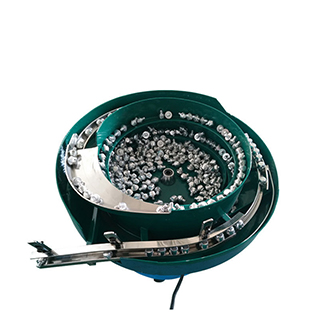In the realm of modern manufacturing, advancements in automation technology have significantly enhanced production efficiency. One such key technology is the vibratory feeder, which plays a pivotal role across various industries. This article aims to introduce the basics of vibratory feeders, highlight their advantages, and showcase real-world applications.
What is a Vibratory Feeder?
A vibratory feeder is an automatic device used for conveying and orienting small parts. It typically consists of a bowl with a spiral or wavy track that moves through vibration generated by an electromagnetic drive or another source of power. As the feeder vibrates, it causes the parts placed on its surface to move along a predetermined path, aligning them in a specific direction for subsequent processing or assembly.
How Vibratory Feeders Work
The heart of a vibratory feeder lies in its drive system. When powered on, the bowl generates vibrations at a certain frequency, transferring this energy to the parts on its surface, causing them to move along the designed track. By adjusting the vibration frequency and amplitude, the speed at which the parts move and how they are oriented can be controlled. Additionally, the design of the vibratory feeder must take into account factors like the size, shape, and weight of the parts to ensure optimal performance.
Advantages of Vibratory Feeders
- Efficiency: Compared to manual operations, vibratory feeders can provide a continuous supply of parts, significantly accelerating production cycles.
- Stability: Once set up, vibratory feeders can maintain consistent operation without the influence of human error.
- Versatility: For different sizes and shapes of parts, simple adjustments to the vibratory feeder’s settings can accommodate various requirements.
- Reduced Labor Intensity: They decrease the need for manpower and reduce the physical strain on workers.
Real-World Applications
- Electronics Industry: In SMT (Surface Mount Technology) assembly lines, vibratory feeders are responsible for aligning electronic components like resistors and capacitors, ready for pick-and-place machines.
- Pharmaceutical Industry: In pharmaceutical plants, vibratory feeders are used to orient tablets, capsules, ensuring accuracy during packaging processes.
- Food Packaging: In the food industry, vibratory feeders sort and count items like candies and chocolates before packaging.
Conclusion
As technology evolves, the capabilities of vibratory feeders continue to improve, promising even greater value in more industries. As an essential part of industrial automation, vibratory feeders bring unparalleled material handling efficiency to modern manufacturing. If your business is looking to boost productivity, consider incorporating a vibratory feeder system.


